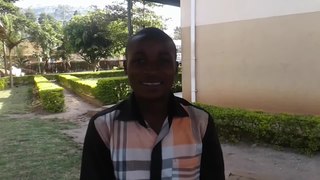
The Bwindi Impenetrable National Park is a national park in southwestern Uganda. It is part of the Bwindi Impenetrable Forest and is situated along the Democratic Republic of the Congo border next to the Virunga National Park and on the edge of the Albertine Rift. Composed of 321 km2 (124 sq mi) of both lowland and montane forest, it is accessible only on foot. It is a United Nations Educational, Scientific and Cultural Organization-designated World Heritage Site.

Kabale District is a district in the Western Region of Uganda. Kabale hosts the district headquarters. It was originally part of Kigezi District, before the districts of Rukungiri, Kanungu, Kisoro, Rubanda and Rukiga were excised to form separate districts. Kabale is sometimes nicknamed "Kastone" as in the local language Rukiga, a "kabale" is a small stone.

Kanungu District is a district in the Western Region of Uganda. The town of Kanungu is the site of the district headquarters. The Bwindi Impenetrable Forest in Kanungu District is among the sites shown in aerial footage in the movie Black Panther.

Kisoro District is a district in the Western Region of Uganda. The town of Kisoro is the site of the district headquarters.

Kisoro is a town in the Western Region of Uganda. It is the chief town of Kisoro District and the site of the district headquarters.

Lake Bunyonyi is in south-western Uganda between Kisoro and Kabale, close to the border with Rwanda. The lake appeared from 2004 to 2009 on the USh 5,000/= note under the title "Lake Bunyonyi and terraces". Scientific literature generally quotes a maximum depth of 40 m (130 ft), but some tourist guides and locals insist that it is much deeper, about 900 m (3,000 ft), which would make it the second-deepest lake in Africa.

Kiga is a Great Lakes Bantu language of the Kiga people (Bakiga). Kiga is a similar and partially mutually intelligible with the Nkore language. It was first written in the second half of the 19th century. Kiga is largely spoken in the ancient Kigezi region which includes about 5 districts, namely Rubanda, Rukiga, Kabale, Kanungu and some parts of Rukungiri. As of 2021, Kiga is spoken natively by about 1.3 million people in Uganda.
Paul Ngologoza OBE, KSG (1897–1984) was a Ugandan writer of Kigezi and Its People. He was born at Rwanyena, in Rubaya, in then Kigezi District. He wrote about the people of Kigezi, which originally comprised the present districts of Kabale, Kanungu, Kisoro and Rukungiri. He wrote the book, despite having had no formal education. He retired in 1960.

Kabale Regional Referral Hospital, commonly known as Kabale Hospital, is a hospital in the town of Kabale in Kabale District, in south-western Uganda. It is the referral hospital for the districts of Kabale, Kanungu, Rubanda, Rukiga, Kisoro and Rukungiri. It is proposed that the hospital will become the teaching hospital of Kabale University once its medical school is established.

Lake Mutanda is a small freshwater lake in Uganda.
Katuna is a town in the Kabale District of Uganda at the border with Rwanda. The town is also called "Gatuna" in the Kinyarwanda language.

Kigezi sub-region is a region in Western Uganda that consists of the following districts:
Bunagana is a town in the Western Region of Uganda. It sits across the international border from the similarly named town of Bunagana, Democratic Republic of the Congo.
Saint Francis Hospital, Mutolere, commonly referred to as Mutolere Hospital, is a private, community hospital, in Mutolere, Kisoro District, in the Western Region of Uganda.
Sanga, is an urban center in the Kiruhura District, Ankole sub-region, in the Western Region of Uganda.

Rubanda District is a district in the Western Region of Uganda. The largest town in the district, Rubanda, serves as the main administrative and commercial center in the district.
Rubanda is a town in the extreme southwest of the Western Region of Uganda. It serves as the commercial, political and administrative center of Rubanda District.
The Katuna–Muko Road in the Western Region of Uganda connects the towns of Katuna and Muko, both in Kabale District.
Busengo is a settlement in the Western Region of Uganda. It is one of the urban centers in Kisoro District. The town lies across the international border from Busengo, Democratic Republic of the Congo.

Ekizino, also knowns Kizino, is a traditional social dance originating from the Bakiga people in Kigezi region of southwestern Uganda. It is derived from the hilly terrains of the region, where farmers engage in vigorous jumping to warm up and stretch their muscles after a hard day's work.














